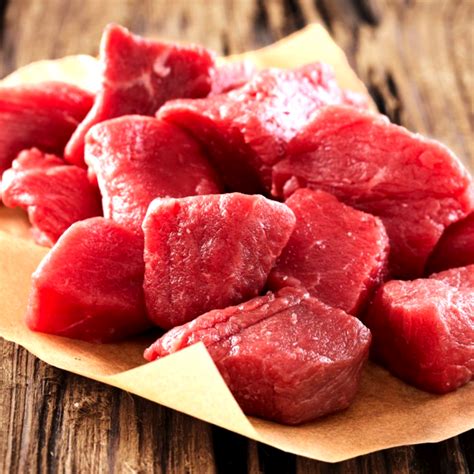Stewing beef, a staple in many cuisines around the world, refers to tougher cuts of beef that are specifically chosen for their ability to become tender and flavorful when cooked slowly over low heat. This technique, known as stewing, breaks down the connective tissues in the meat, making it not only palatable but also incredibly delicious. The process of stewing is a culinary method that involves cooking the beef in liquid, such as stock or wine, on low heat for an extended period, which can range from an hour to several hours, depending on the cut of meat and desired level of tenderness.
Origins and History
The concept of stewing beef dates back to ancient times when cooking methods were primitive and fuel was scarce. People discovered that by cooking tougher, less desirable cuts of meat slowly, they could make them edible and even enjoyable. This method was not only economical but also allowed for the utilization of every part of the animal, reducing waste. Over time, stewing beef has evolved and been adapted into various cuisines, each adding its unique spices, herbs, and cooking techniques, but the fundamental principle remains the same.
Types of Stewing Beef
Stewing beef can come from various parts of the cow, with different cuts offering unique textures and flavors. Some of the most common cuts used for stewing include:
- Chuck: This cut comes from the shoulder and neck area of the cow. It’s known for its rich flavor and tender texture when cooked.
- Round: Cuts from the hindquarters, which are leaner and can be slightly tougher but have a robust beef flavor.
- Brisket: From the breast or lower chest area, brisket is known for its flavorful and tender outcome when slow-cooked.
- Shank: While often used for soups and stews, beef shank can also be used for stewing. It’s rich in collagen, which breaks down during cooking, creating a rich, gelatinous sauce.
Cooking Methods
The beauty of stewing beef lies in its simplicity and flexibility. It can be cooked on the stovetop, in the oven, or even in a crockpot or instant pot for quicker results. Each method allows for the slow breakdown of the meat’s connective tissues, resulting in tender, fall-apart beef.
- Stovetop: Browning the beef in a pan before adding liquid and simmering it on low heat for several hours.
- Oven: A Dutch oven or heavy pot with a lid is ideal for oven stewing, where the beef is browned on the stovetop before being transferred to the oven for slow cooking.
- Crockpot/Slow Cooker: Perfect for busy days, where all ingredients are added to the crockpot in the morning and cooked on low throughout the day.
- Instant Pot/Pressure Cooker: For a quicker stew, pressure cooking can significantly reduce cooking time while still achieving tender results.
Enhancing Flavor
While the slow cooking process naturally enhances the flavor of the beef, additional ingredients can elevate the dish to new heights. Aromatics like onions, garlic, and carrots are commonly sautéed with the beef to add depth. Herbs and spices, depending on the desired cuisine, can range from thyme and rosemary for a traditional European flavor to cumin and chili for a spicy, Latin-inspired stew. Wine, beer, or broth add moisture and flavor, with the option to reduce the liquid for a thicker, more intense sauce.
Conclusion
Stewing beef is more than just a cooking method; it’s a way to transform tougher cuts of meat into culinary masterpieces. With its rich history, versatility in cooking methods, and the ability to adapt to any cuisine, stewing beef remains a beloved dish worldwide. Whether you’re a seasoned chef or an amateur cook, the art of slow-cooking beef is sure to delight your senses and satisfy your appetite.
What are the best cuts of beef for stewing?
+The best cuts for stewing include chuck, round, brisket, and shank. These cuts are tougher and have more connective tissue, which breaks down during slow cooking, making them tender and flavorful.
How long does it take to stew beef?
+The cooking time for stewing beef can vary significantly depending on the cut of meat and the cooking method. On average, stovetop and oven methods can take 2-3 hours, while a crockpot may take 6-8 hours on low heat. Pressure cooking can reduce the time to about 30 minutes to an hour.
Can stewing beef be cooked in a pressure cooker?
+Yes, stewing beef can be cooked in a pressure cooker or Instant Pot. This method significantly reduces cooking time, achieving tender results in under an hour, making it a great option for busy individuals.
In the realm of culinary arts, stewing beef stands as a testament to the power of patience and the magic of slow cooking, turning what might otherwise be considered undesirable cuts into mouthwatering, comforting meals that are enjoyed worldwide.


